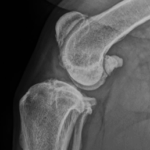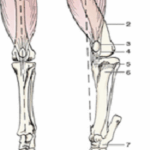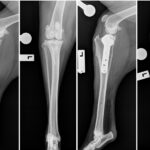Does Your Pet have Cancer?
When many of my clients hear the “big C” being diagnosed in their pet, they initially assume it is a death sentence. Fortunately, that is not always the case any more.
We find many of our cancer patients can live happy, apparently healthy lives for many months or years after diagnosis.
Before I talk too much about the sort of treatment options available, I want to make my personal belief about cancer treatment very clear. I do NOT believe in keeping animals alive at all cost, or when their quality of life is not good enough. The treatment can never be worse than the disease, and if it’s not in the animal’s best interest, I won’t continue treatment.
I do find that with almost all cancer treatments, the animal does live longer than it would without treatment. This is normally because we can control or cure the cancer in many cases, while in other cases it is simply because we give them back their quality of life for a period of time.
A few years ago, I completed a year long Distance Education course on Medical Oncology. It transformed my approach to medical and surgical cancer patients.
Before we start treating any cancer, we need to know two things:
- What is it? Different cancers have different treatment options, behave differently, and have different outlooks. If we know what type of cancer it is, we can work out how it is likely to behave, how we can best treat it, and the likelihood of successful treatment.
- Where it is? When we talk about the location of the cancer, it relates to where the primary (initial) cancer is, as well as where we may see signs of spread. A cancer in the skin on the side of a dog’s body is much easier to remove and cure surgically than one near its paw. If a cancer has spread to other parts of the body, we are sometimes better off not putting the dog through a big surgery to remove the primary tumour as the dog may go through a lot of pain as a result of a surgery which is unlikely to improve the dog’s quality of life or life expectancy.
To determine the type of cancer, we will take a sample from the tumour and examine it microscopically. This sample might be taken using a needle in the consult room, or a surgical biopsy. For many cancer types, we can examine the sample in the clinic and give you an answer within a few minutes, while at other times we need to send the sample to a specialist pathologist. We normally have the pathology results back within two working days, so it’s pretty quick.
Once we know what type of cancer it is, we look at where it is located. In some cases, we know the cancer is unlikely to have spread so may look towards surgery to cure the cancer. If the cancer may have spread, we may examine the animal further with xrays, ultrasound or even CT scans to check for signs of spread. Once we have all the information, we can plan the treatment.
In some cases, the best thing we can do is nothing. For example, and old dog with a benign or low grade tumour may not gain sufficient benefit from surgery to justify the pain and recovery time. In such cases, we may use some anti-inflammatory medication to try to slow the tumour growth and give the dog the best life it can from there.
For many cancers, we can cure them surgically. The most important thing when it comes to surgical treatment is to know what type of cancer it is. Benign tumours often need very little surrounding tissue removed to “cure” the dog, where as malignant tumours may need up to 3cm of apparently “normal” tissue removed from around the lump to give a good chance of cure.
I have see vets in the past (and I know I did this myself in my younger years before I know better) remove lumps without knowing what they are. The problem with this approach is they may take too much surrounding tissue in some cases (meaning the dog experiences more pain than necessary and a potentially slower recovery), and not enough in others (meaning a second, more difficult surgery is needed).
For some aggressive cancers such as soft tissue sarcomas near a paw, we may not be able to cure them surgically without amputating a leg. In these cases, we now have mediations available that can stop cancer regrowth for many years, meaning we no longer need to remove a leg to help the dog.
For cancers such as lymphoma, we can use medical treatments. When people hear the word chemotherapy, they normally worry that their dog will get very sick and lose its hair. This is rarely the case.
For people undergoing chemotherapy, the aim is often cure, or at least they can give their consent to aggressive treatment to prolong their life. Our pets can’t give such consent, and to try to cure the cancer would make them unacceptably sick in many cases.
The way I use chemotherapy is to control the cancer, not cure it. Think of it like arthritis medication. When a dog has arthritis, we put it on anti-inflammatory pain killers. The dog is comfortable and happy, but eventually the medication stops working. Until the medication stops working, the dog feels happy, healthy, and can do the things it loves to do. Chemotherapy in dogs is a lot like this. We control the cancer for a period of time (often several years), and in the meantime the dog feels, looks and acts like a happy, healthy dog. We know that because we aren’t using aggressive chemotherapy we’re not going to cure the dog, but we give it a great life in the meantime.
Chemotherapy can make a huge difference to a dog’s life expectancy. For cancers such as lymphoma, the life expectancy goes from 4-6 weeks up to around 13 months. With cancers like soft tissue sarcomas, we normally expect the dog to die from something else before the cancer recurs.
If you are concerned that your pet may have cancer, please call us today on 97250399. Dr Braden Collins has an interest in cancer treatment, and works at the Eaton Vet Clinic Tuesday-Friday each week.




